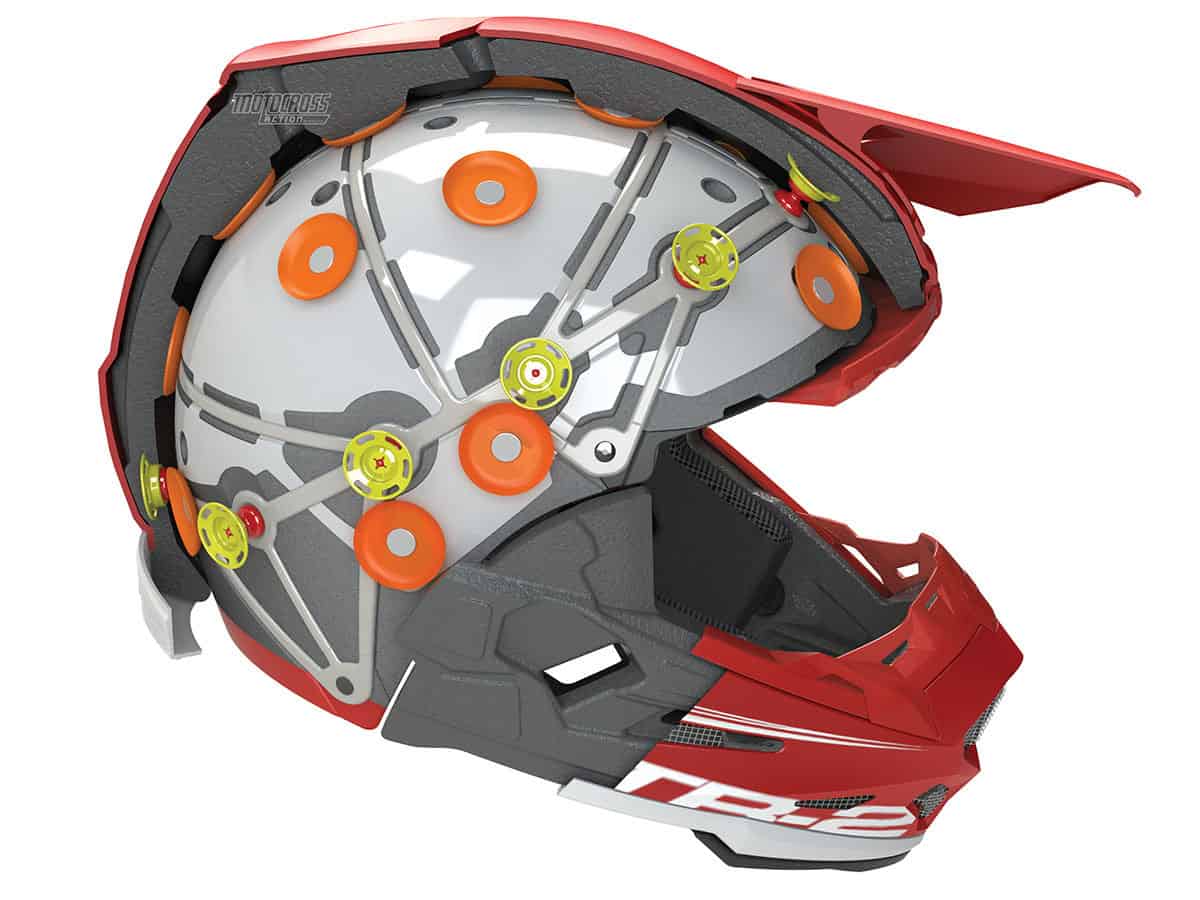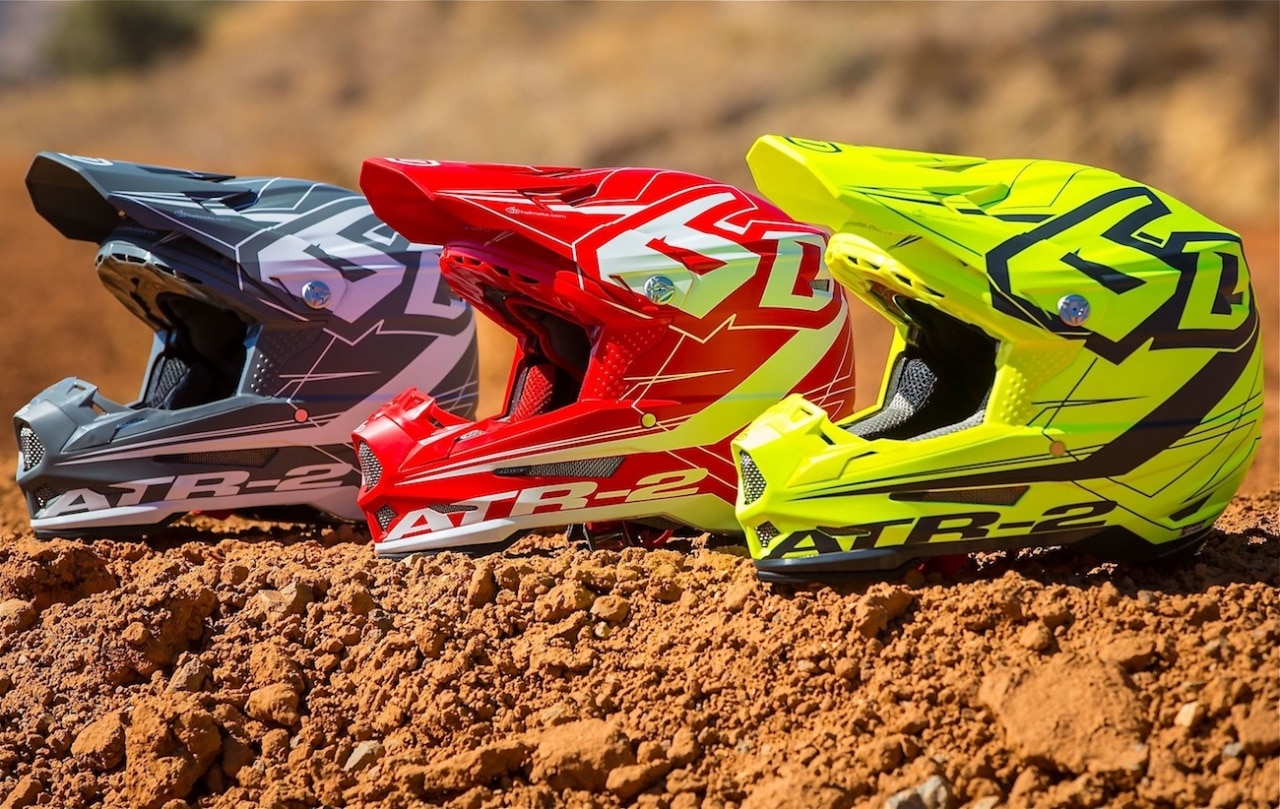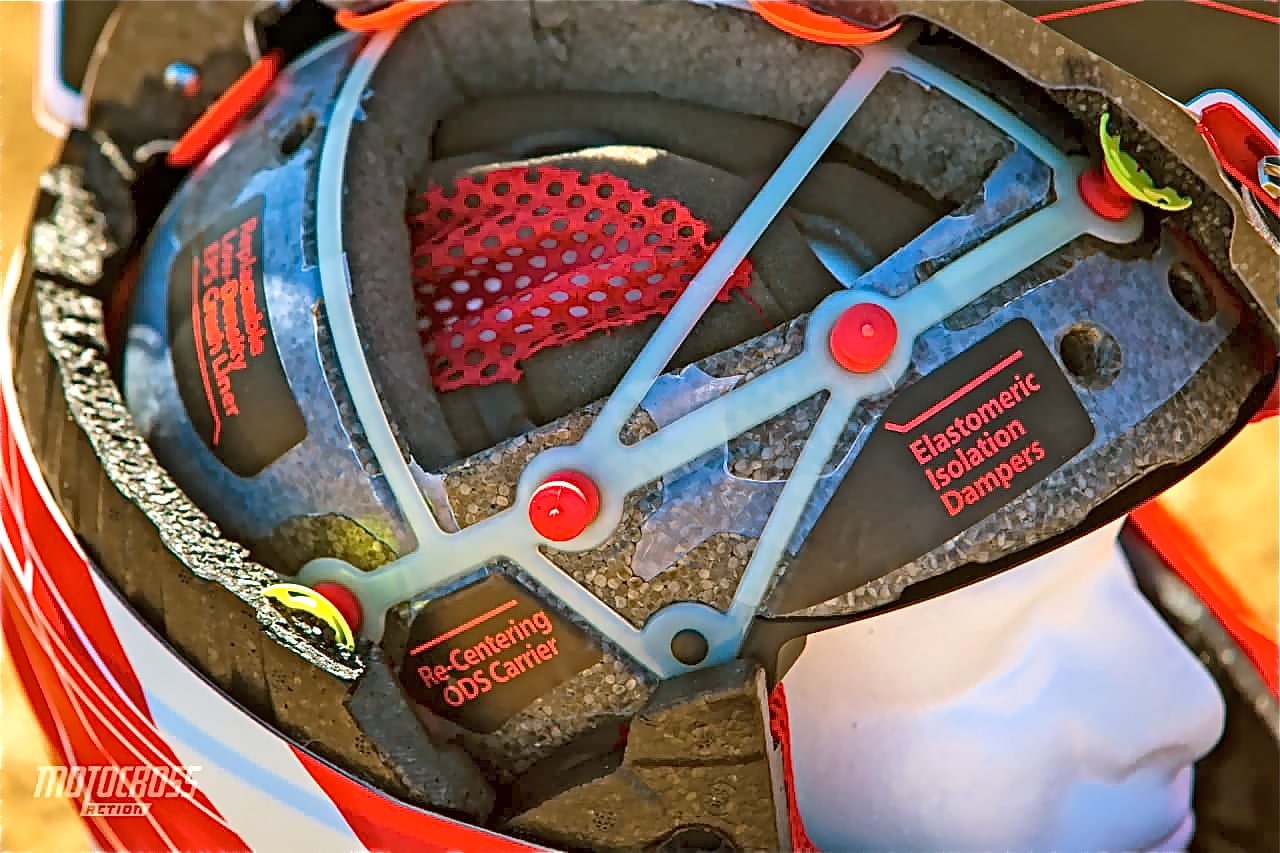TEN THINGS YOU NEED TO KNOW ABOUT THE 6D ATR-2 HELMET
(1) Advanced ODS. The proven ATR-2’s ODS technology is highly evolved and influenced by ODS’ award-winning work inside the NFL’s Head Health Challenge III competition. 6D won a $500,000 grant from the NFL to continue their design research. Back in 2012 the 6D ATR-1 motocross helmet changed the way helmet safety was looked at and the all-new 2018 6D ATR-2 pushes that envelope even farther.
(2) Liner. Unlike the ATR-1, the ATR-2 is easily rebuildable with a replaceable inner EPS liner. The entire helmet can be inspected post-crash to determine if the helmet is safe for continued use. The inner EPS liner is the first layer of defense and a very important component of the new advanced ODS design. 6D’s dual-liner design is effectively a helmet within a helmet. Inside the in-molded PVC (Polyvinyl Chloride) outer shell are two liners, the ODS units (in their own special carrier) and two different densities and types of foam.
(3) EPP/EPS foam. Engineered and manufactured to form a sphere-like surface when installed into the helmet, the multi-impact EPP outer liner is strategically positioned against the helmet’s outer shell’s inner surface. With its exceptional energy-absorbing qualities, EPP has some engineering challenges but also benefits, such as durability. 6D’s engineering team designed multiple islands of EPP “damping towers” into the outer EPP liner to assist in progressive loading of the ODS system during impacts.
EPS material is used for the inner liner. EPS is a one-and-done crushable foam that is ideal for use in helmets and has for decades been the standard material.
 (4) ODS. The ODS carrier allowed the development of a modular helmet design that is easily rebuildable and can manage greater displacement of the inner liner. The air space between the two foam liners was 7mm on the ATR-1, but is now 10mm of working room for the ODS and isolation dampers on the ATR-2 The extra space helps manage energy during impact, compression and shearing loads.
(4) ODS. The ODS carrier allowed the development of a modular helmet design that is easily rebuildable and can manage greater displacement of the inner liner. The air space between the two foam liners was 7mm on the ATR-1, but is now 10mm of working room for the ODS and isolation dampers on the ATR-2 The extra space helps manage energy during impact, compression and shearing loads.
(5) Isolation dampers. A reduced array of isolation dampers connects the ODS carrier to the outer EPP liner in the ATR-2. They work in unison with the EPP damping towers to manage the ODS system during impacts. The isolation dampers help reduce impact energy before it is transferred to the head and brain during impacts. The elastic properties of the dampers, combined with their unique shape, provide a progressive spring rate to manage low-threshold energy.
(6) Shell design. The 6D concept of “optimized shell design” tasks multiple materials to work together to provide greater protection and energy mitigation. Manufactured from a proprietary matrix of composite materials and fibers, the shell’s job is to be the first line of defense against the harsh realities of a crash. The shell must have enough structural integrity to prevent penetration, but not be overly stiff or it could act like a cue ball that transfers most of the impact energy into the helmet’s interior environment.
(7) Chin bar. The ATR-2 chin bar and mouth piece are packed with an EPP foam insert that is over-molded with polyurethane at the sternum pad location. The ATR-2’s chin bar material is thicker and softer than that of previous designs and provides a more forgiving surface to manage impacts to the jaw area.
(8) Eyeport. 6D’s unique “brow rib” design above the eyeport opening provides additional strength to the shell structure nearest the eyeport opening. Because of its large opening the eyeport area above the rider’s goggle is a critical area in need of additional structural integrity.
(9) Spine protection. The rear trailing edge of a helmet can cause spinal injuries when it is jammed backwards during a crash. If not properly designed, the hard edge of the shell and liner can strike the rider’s neck. The 6D ATR-2 has a strategically designed cervical protection zone—essentially a crushable cushion of foam from the EPP and EPS liners. This region of the ATR-2 is designed to provide a more compliant crush zone, while the recessed shell reduces a potential fulcrum point that often forces a helmet down and back against the neck and shoulders.
(10) Technology Leader. 6D introduced the ATR-1 in 2012. Its focus on reducing rotational energy, providing protection across a wider range of G-forces (especially low-threshold energy that most 2012 helmets did not address ODS) and its dual-liner concept started an industry-wide scramble to improve helmet safety. Plus, the 6D ODS system inspired the FIM to create new mandatory helmet standards for MotoGP road racing.








Comments are closed.